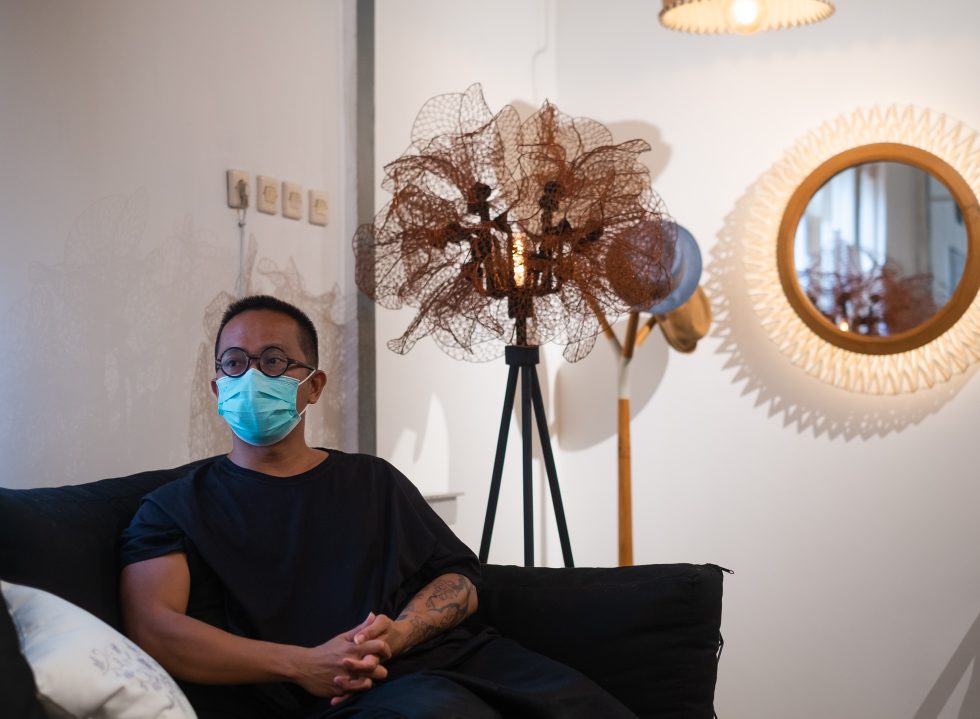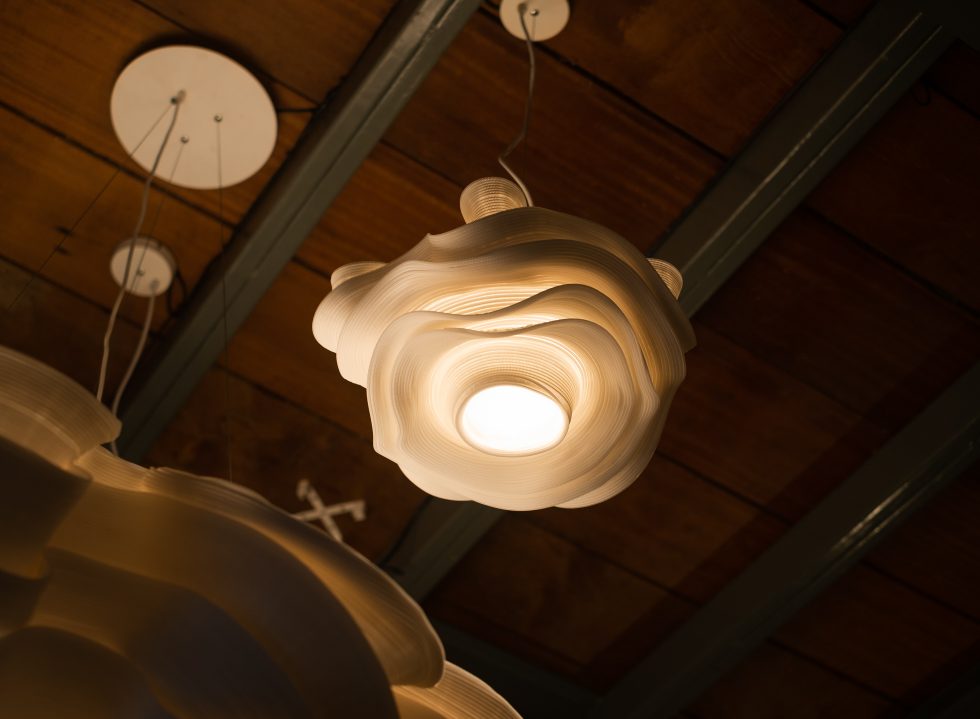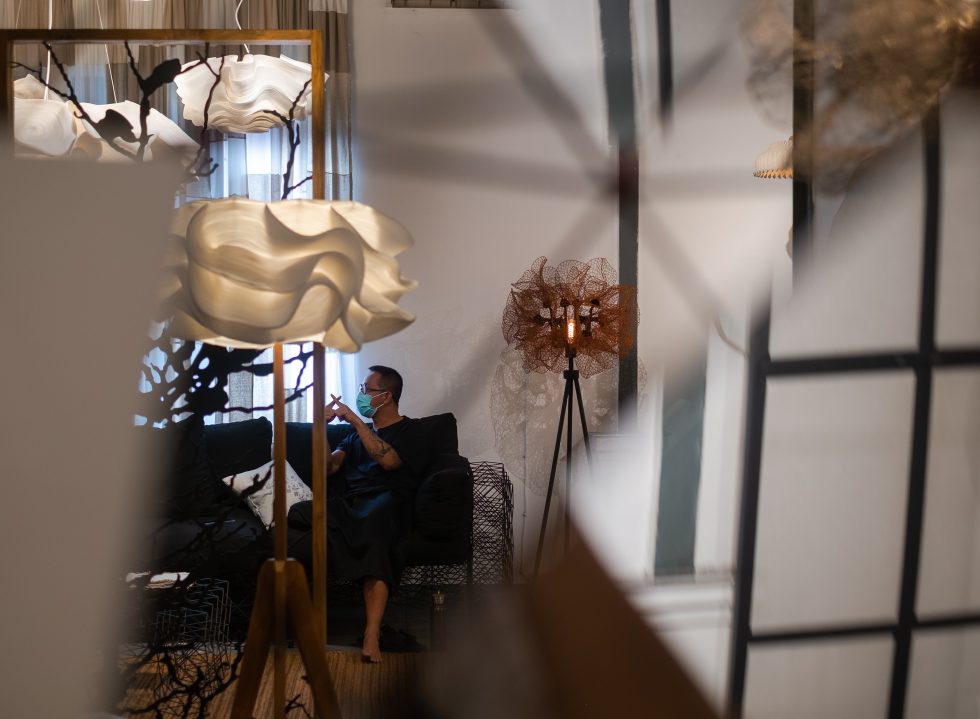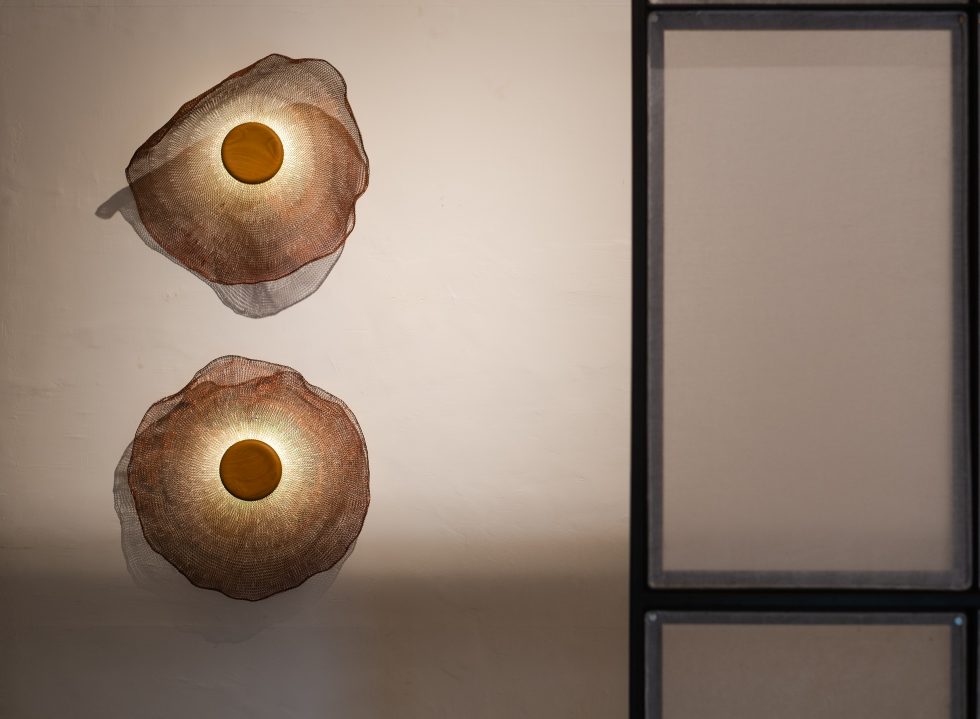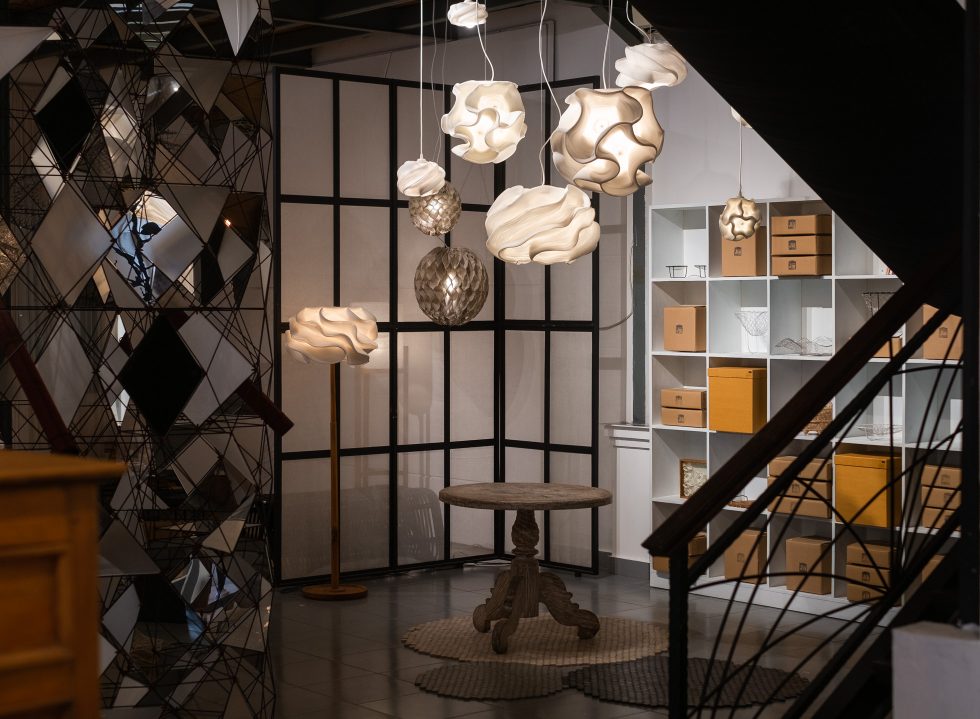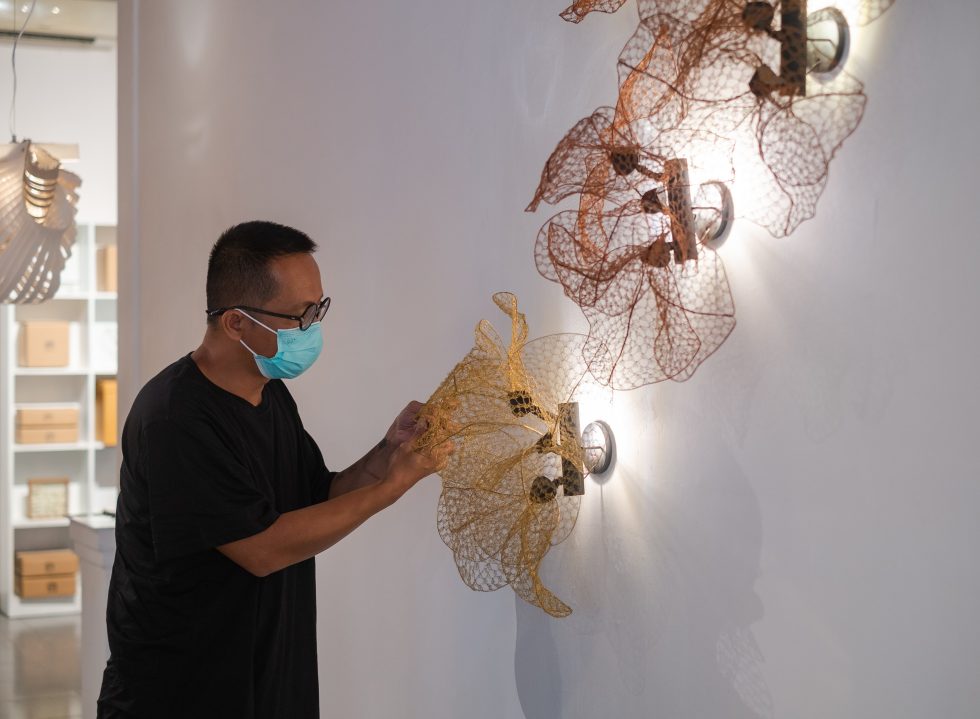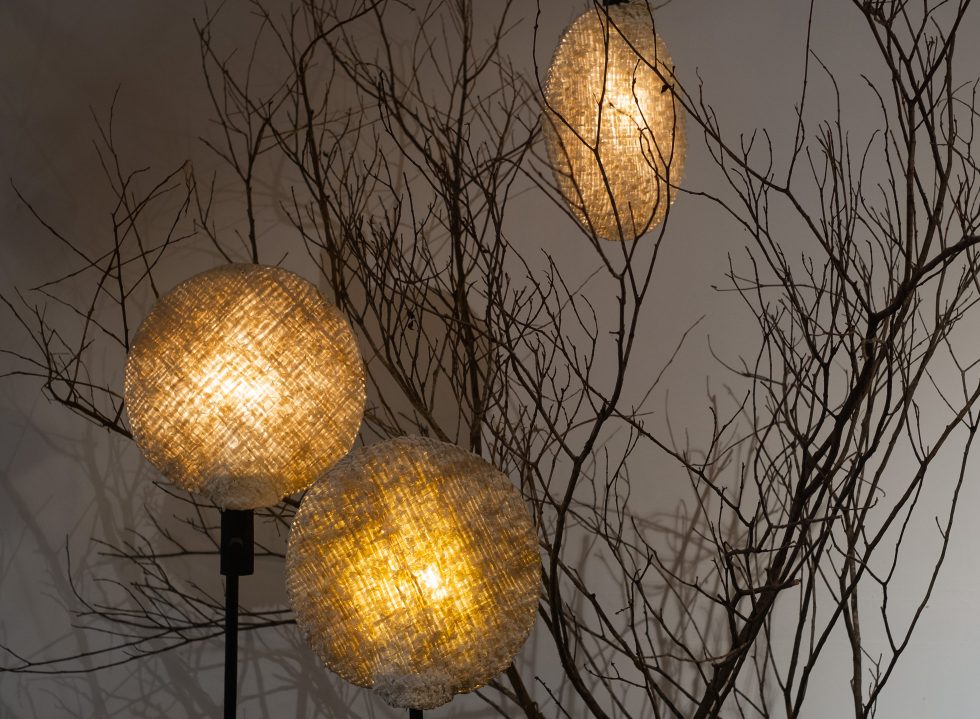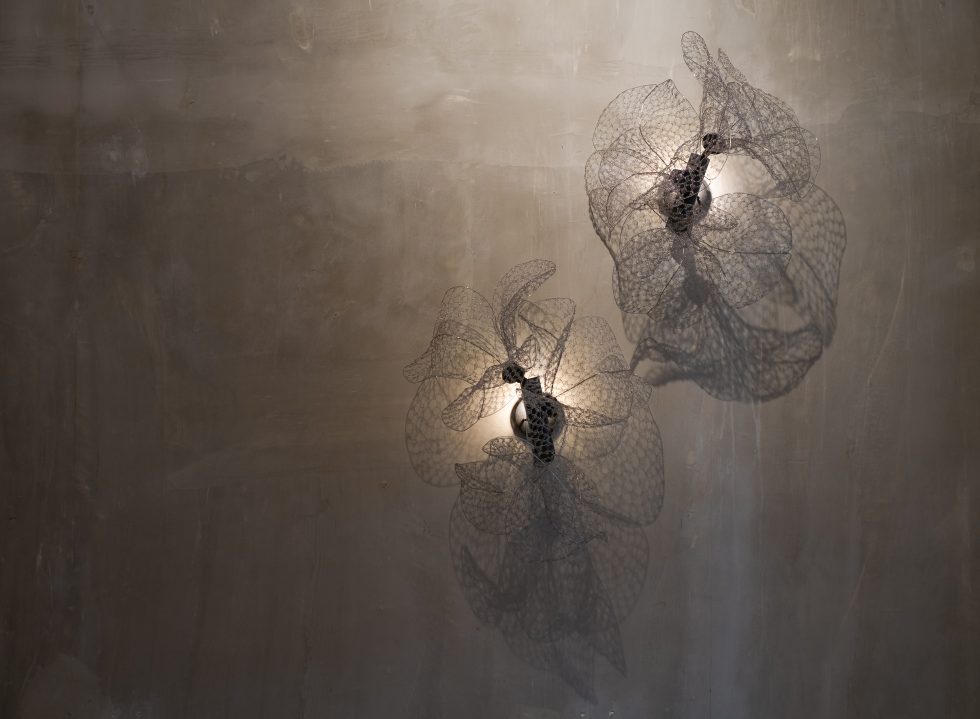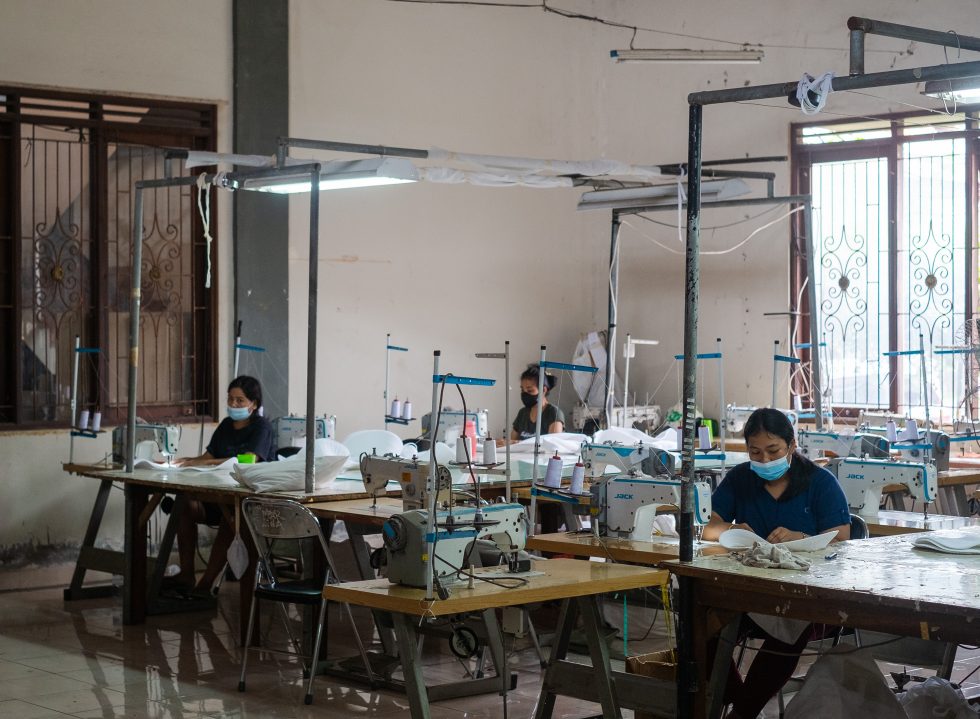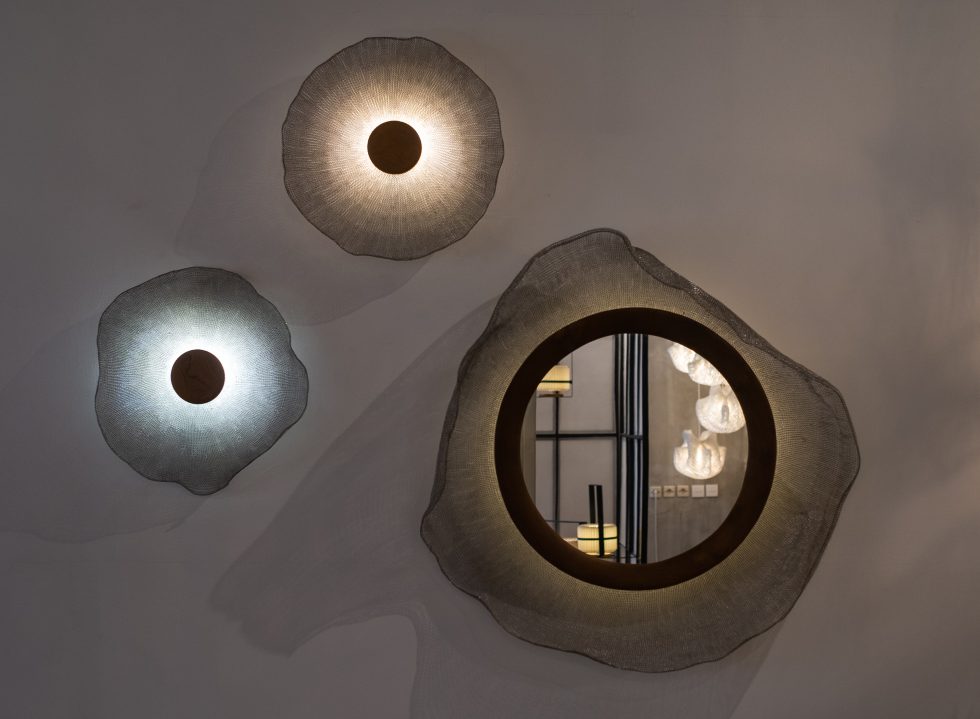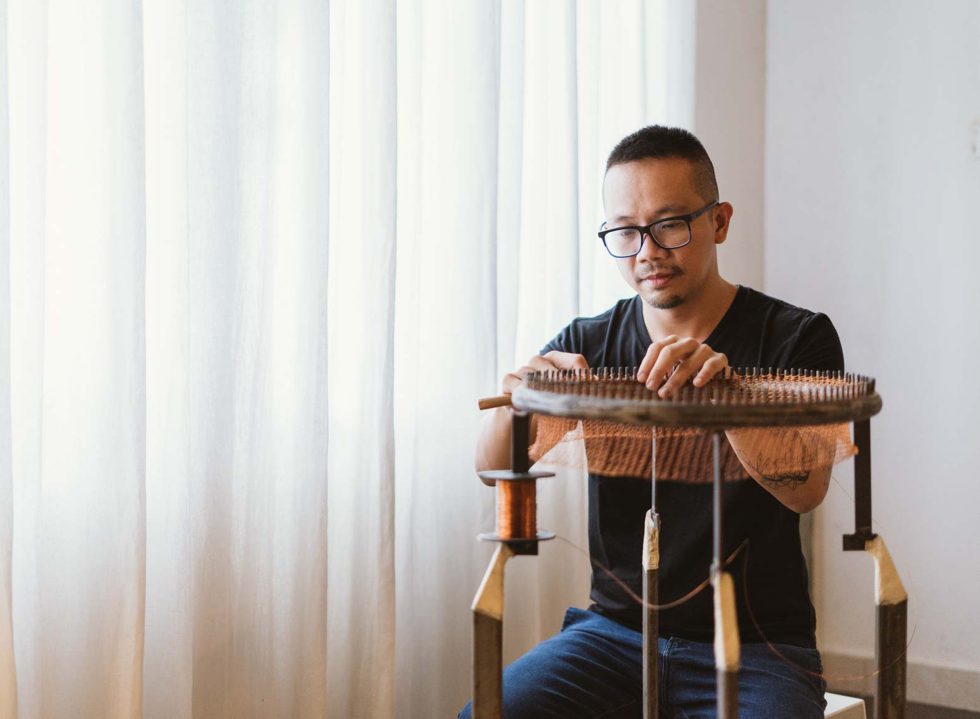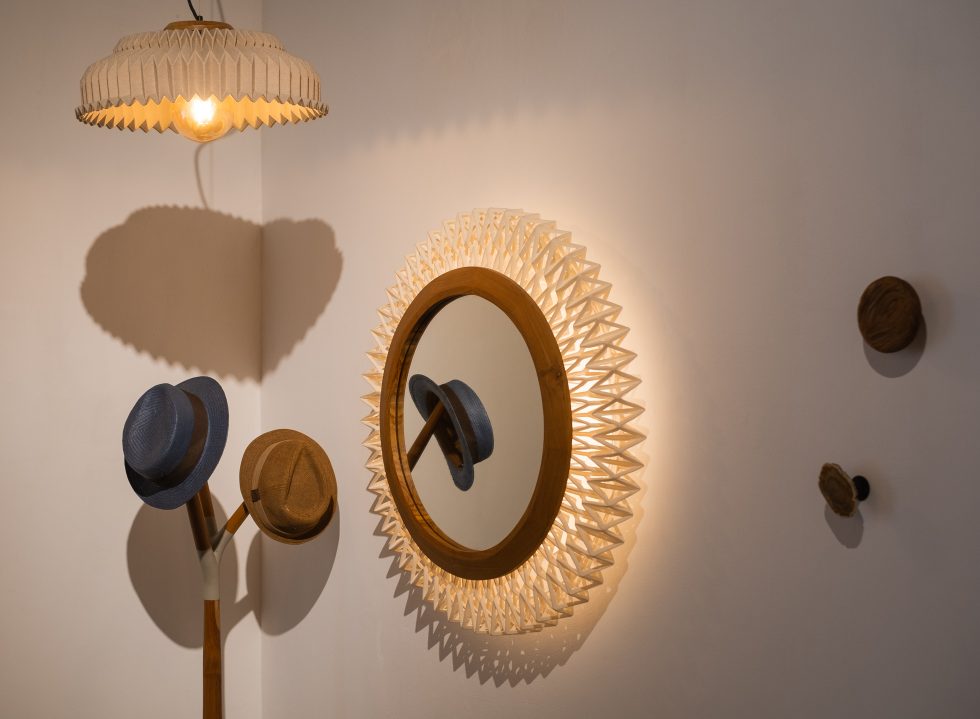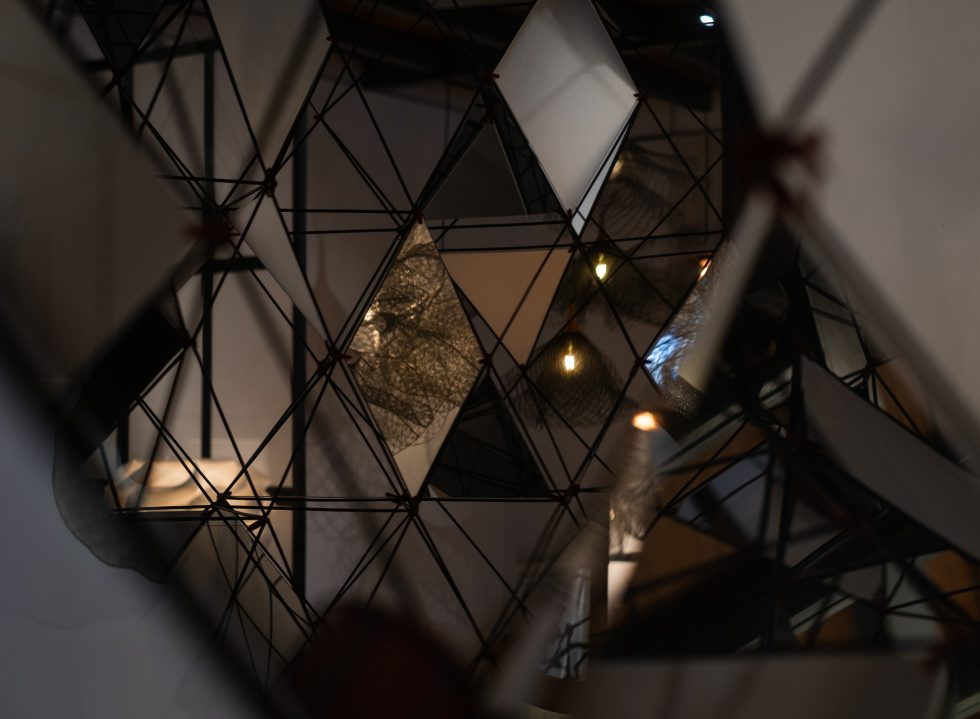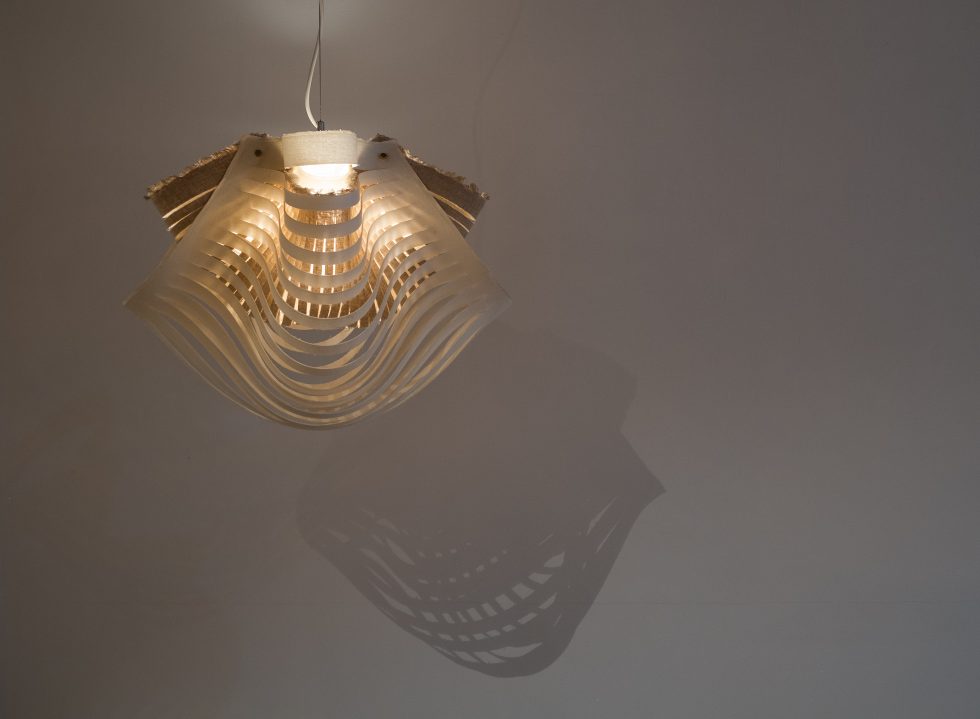For product designer Budiman Ong, the element of surprise has been an essential component for Ong Cen Kuang, the brand with a singular focus on exceptional lighting fixtures that he founded in 2008. At a glance, the surprise seems to appear in the form of the shapes—organic and fluid as if taking cues from nature. But look closer, and one will find that the real wonder of Ong Cen Kuang lies in the use of unique materials, such as zipper to crocheted copper threads, manipulated into one-of-a-kind designs.
Budiman studied design at Gray’s School of Art, Robert Gordon University in Scotland, before moving to Bali where he worked for the renowned international luxury jewellery brand, John Hardy. “I didn’t work with lights at all there. It’s more on product development,” revealed Budiman who carries a calm and, at times, bashful demeanour.
Six years later, he left and started Ong Cen Kuang, where he regularly received custom-made orders from clients for decorative purposes, especially for weddings. Soon, word-of-mouth spread and his business grew. “In 2011, we started having employees. So I was working on projects by myself for three years,” he recalled. Fast forward to the present day, his studio has grown from a one-person operation to a team of 50 employees that oversee design, production, sales and marketing.
What facilitates the brand’s rise is more than just the riveting designs and uncommon materials, but also Budiman’s approach that is rooted in respecting and understanding the craftiness of the materials used. Take the ‘Krisan’ series, in which the designer hand-crocheted different sizes of copper wires into the commanding shapes of chrysanthemum flowers.
“What I like about it is that a person usually associates a material made out of copper with something heavy, hard and static. We try to change that perspective with a result that is light and foldable. In terms of material and technique, we try to unite them and find a crossing point in order to bring them into something quite different,” said the designer. It is also worth noting that the designer learnt how to crochet simply by watching tutorials from YouTube.
Most of Ong Cen Kuang’s creations, such as the ‘Krisan’ series, possess incredible tactile quality, where what appears stiff and sharp is actually soft to the touch and foldable. The latter quality also opens up to various possibilities of shapes, which in turn casts different shadows depending on how it’s ‘played’. “I love malleability. People can shape it, so it’s up to them to play with it. Sometimes we correct customers if it should be a certain way, but I’m very happy with how our clients interact with the products. I’m not very precious about shapes; the idea is more important for me,” Budiman mused.
If the typical process of design is usually characterised by sketching before sourcing the materials, then going through the rigorous exercise of bending them to the will of the original drawing, Budiman flips it the other way around.
“I always try to collect things, leave them around or hang them and then I’ll come back to it when the time is right. There are also materials that I really like but struggle to transform into a product.” Sometimes, the potential of the material reveals itself like a eureka moment. “Once, we finished creating a product while on my way home to Tabanan from the office (roughly an hour trip). So it depends,” Budiman recalled.
For the designer, a good example of a material manifesting its possibilities is evident in the ‘Alur’ series; made with zipper material that can be detached and cleaned, the series has been the foundation of Ong Cen Kuang and the most personal collection to date. Take the Kelopak Pendant, which spans the size of a child in diameter and when lighted, resembles a soft-glowing giant coral in the wild.
To Budiman, it is the quest to comprehend a material’s potentials that allow his creations to reflect shapes of nature. “Not that we’re trying to force the material into a shape, but we carry the material, understand it, and the shape appears natural, on par with nature.”
While Ong Cen Kuang can be seen as Budiman’s beloved brainchild in artistic self-introspection about design discovery with a clear line of what can and cannot be done, he is much freer in his approach when it comes to JIA by OCK. The latter is a homeware boutique store in Canggu, Bali that he started with longtime collaborator and partner Rudi Winata.
“For Jia, it’s more about us embracing the community and collaborative nature. With Jia, we’ve worked with various companies in Bali and Jakarta and even from Sumatra. One of the things I want to develop is the handcrafting value. Jia is about empowering silhouettes, handicrafts and education. The way we educate is associated with culture,” he explained.
Indeed, on their website, Jia is aptly described as “one-third magic of handicraft, one-third simple silhouette and one-third education”. There, fans of Ong Cen Kuang designs will undoubtedly find the signature touch of the brand trickled into practically elegant yet affordable products. Case in point, Bakul Jala, a multipurpose kitchen basket handcrafted from crocheted stainless steel threads. Here, their in-house products share the same space with other notable local brands, such as a handwoven rug from Rumpun Maison and a concrete phone dock from Conture.
“Personally, for a company that’s been around for more than a year, it moved quite fast. It’s easier to handle because it’s not personal. It’s more about a concept as a whole. Jia embraces everybody. It’s about inclusivity but still shares a common thread with Ong Cen Kuang: handicraft,” said the designer.
There’s a sense that the designer already has a clear understanding of who he is as a designer and the directions he is going for. But when asked about his favourite series from Ong Cen Kuang, he paused to consider: “Tough question. I can’t answer that, I think….”
Then he followed up with an answer, which depending on how one views it, can be seen as the perfect summary for the DNA of Ong Cen Kuang: “A product is never finished. From there, there will always be a 2.0. It’s always there, and even when you’re finished with the shape, you try new things with the same material and it will give form to different things.”
